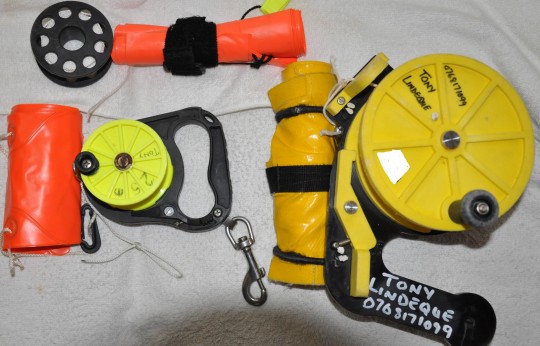When I met Tony he was living in Mozambique, and when his visa ended he moved to Durban. Around that time we had decided we quite enjoyed each other’s company, so I flew up every second weekend to visit him. He was working at Calypso Dive and Adventure Centre at uShaka Marine World as an Instructor and Divemaster, so I tagged along on dives on the Saturday mornings I was in town. I was a fairly new diver at the time (it was September 2009).
It was the first time I’d come up to Durban to see him, and he had a student who had to do a deep dive on the Saturday morning. The boat was heading out to the Coopers Lighthouse wreck, a mysterious ship lying in 24-32 metres of water whose identity is not certain. Some people think it’s an old whaler, but there are several theories as to its origin. The wreck is thought to be about 100 years old and situated in line with the Cooper Lighthouse on the Bluff.
The rubber duck left the beach at 0700. The sea was looking quite bumpy, and the boat ride wasn’t great. I am not the best sailor, but as long as the boat is moving I’m fine. It’s about a 25 minute ride through shipping lanes, south of Durban harbour.
There was a howling current when we arrived at the site, and while we kitted up on the boat we drifted some way from the shot line hooked to the wreck. The sea was horrible – I alternated vomiting over the side (so embarrassing) with doing up clips on my BCD! Once we were ready, the skipper circled round and dropped us close to the shot line, but on the wrong side – so the current was taking us away from the line rather than towards it. I was with Tony, and his student – who was on the other side of the boat – had managed to get to the shot line and was holding on for dear life. In the current, his body was horizontal, like a flag in a strong wind.
Tony and I swam and swam, for what felt like an hour. We were swimming into the current at about 10 metres depth, but I think we were either standing still or moving backwards (it must have looked quite funny, if you were in that sort of mood). We could see Tony’s student, and we could see the shot line ahead of us, and then it just seemed to vanish. By that time the student had joined us, and the current had taken us out of sight of the line.
I wasn’t quite sure what we would do at that point, but Tony had a plan, which he explained to me later, on dry land. We descended to about 20 metres, and stayed there for about 20 minutes. The three of us were hanging in the blue ocean – no sign of the bottom – surrounded by shoals of fish. We could have surfaced immediately when we lost the shot line, but then we’d have had to spend the duration of the dive sitting on the boat, which was being tossed about like a cork. (I’d already demonstrated low tolerance for this kind of activity by chumming the local fish life while kitting up.) That’s if the boat had even found us – the skipper wouldn’t be expecting divers to surface after only ten minutes, and the conditions were not conducive to him spotting us as soon as we surfaced.
After about 20 minutes we began our ascent, doing a safety stop at 5 metres with an SMB deployed. When we reached the surface, the sea was mountainous. There was no sign of the boat, and even if it had been five metres away from us we’d have struggled to see it because of the size of the waves. Tony clipped our BCDs together so that we would drift more slowly (larger surface area to offer resistance to the current), and told me to keep my regulator in my mouth becuase the waves were so big. (It was on this dive that I discovered that you can vomit through a regulator… useful fact to keep in mind…)
Then we waited. The bright orange SMB stuck up between us, and in between gags I scanned the horizon (which was not very large, thanks to the waves) for the boat. The three of us floated there for 55 minutes before the boat found us. After being hauled aboard like a drowned rat I heaved over the side for good measure and then concentrated on my lollipop.
The skipper told Tony he’d been driving around looking for us, cursing Tony for not having an SMB deployed. We did – but the waves were so big that the boat was practically on top of us before it could be seen. If we hadn’t had an SMB, I very much doubt they would have found us without the aid of the NSRI.

For the uninitiated, SMB stands for Surface Marker Buoy. They’re generally tubes of orange, red or yellow plastic, that you inflate by inserting your octo or regulator at the bottom, and purging it. It’s generally considered good practice to deploy an SMB at the safety stop when you’re on a boat dive – it warns other boats of your presence, signals that you’re ok, and gives your skipper an indication of where to come and fetch you.
If you get lost on the surface, a SMB is essential. You’re not very visible dressed from head to toe in black, and that orange tube might be the only difference between a very long time drifting on the surface, and a quick rescue. They fold up really small, and with a little practice are very straightforward to deploy. If you’re diving off a boat, or in an unfamiliar location, make sure you pack your SMB.








